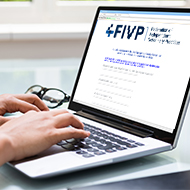
Vets urged to encourage owners not to relinquish infected animals
Speakers at a WSAVA webinar, held on September 15 2020, have appealed for kindness towards companion animals testing positive for SARS-Cov-2 and stressed that there is still no evidence of transmission from a companion animal to a human.
During the webinar, Dr Michael Lappin, chair of the WSAVA’s One Health Committee, confirmed that the virus is a reverse zoonoses, with humans passing SARS-Cov-2 to pets in the few cases that have been reported worldwide.
Dr Lappin went on to explain that experimental studies at Colorado State University have shown that both cats and dogs have demonstrated a ‘robust antibody response’, and typically display no symptoms. While dogs do not shed live virus, cats shed the virus for a short period of time and could transmit the disease to other cats.
According to Dr Lappin, further data is being collected to explore whether the clinical illness in naturally infected dogs or cats is common or important. He added that it is currently unclear whether these animals require specific treatment.
Speaking on the topic of preventative health, Dr Richard Squires, chair of the WSAVA’s Vaccination Guidelines group, reminded veterinary professionals of the importance of risk-benefit analyses during the pandemic. He suggested that the current priority should be the protection of puppies and kittens using core vaccines, with the last or sole dose being given no earlier than 16 weeks.
More advice for veterinary professionals on vaccination during the pandemic is available on WSAVA’s Resource Hub.
Commenting on the webinar, Dr Lappin said: “The other panelists and I hope that the content of the webinar can be used to improve the welfare and health of companion animals. We all look forward to working together to provide additional updates to the WSAVA membership as new information comes available.”
The full webinar can be viewed by clicking here.
Image (c) WSAVA.



 FIVP has shared a survey, inviting those working in independent practice to share their views on the CMA's proposed remedies.
FIVP has shared a survey, inviting those working in independent practice to share their views on the CMA's proposed remedies.